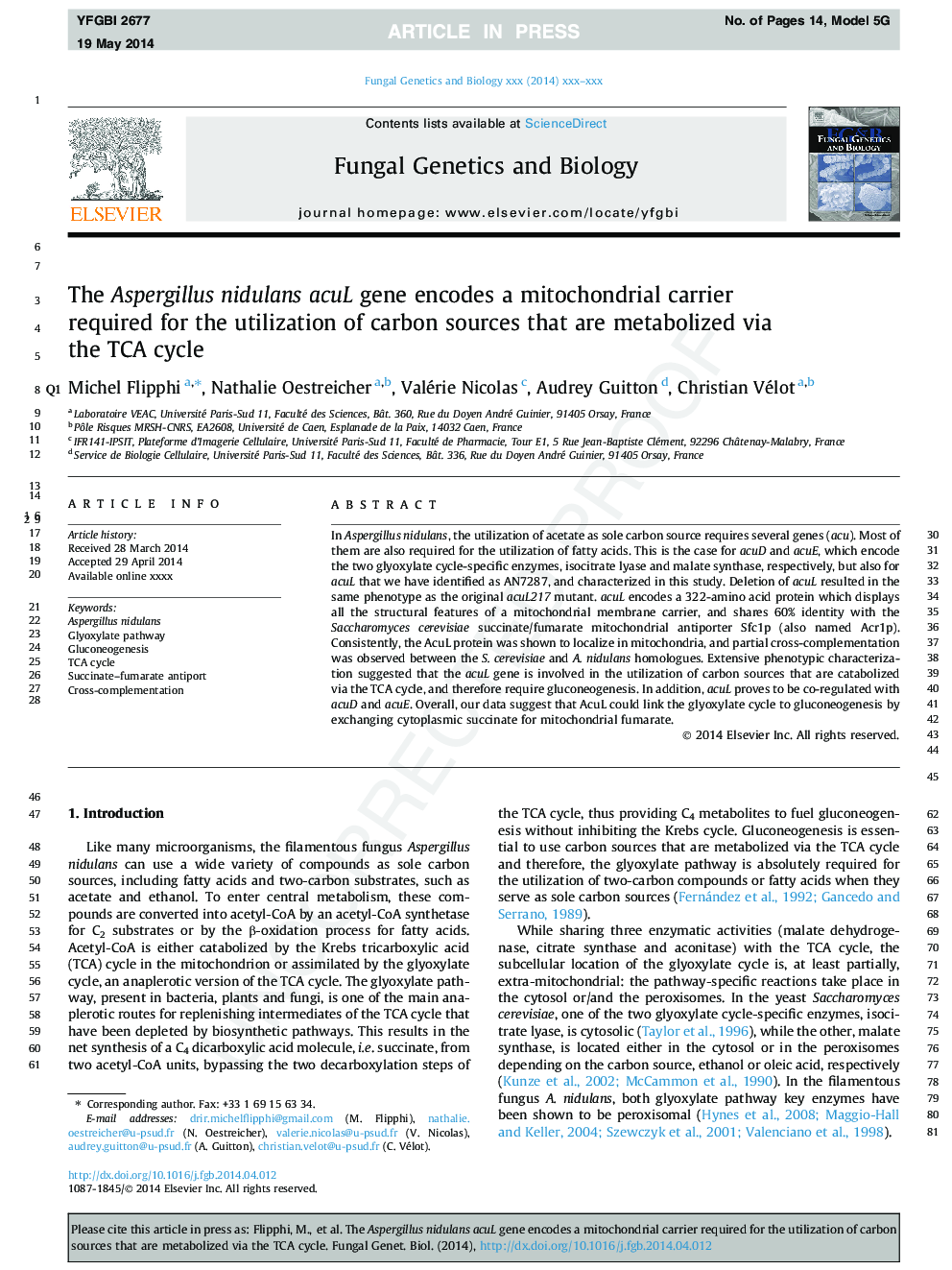| Article ID | Journal | Published Year | Pages | File Type |
|---|---|---|---|---|
| 8470878 | Fungal Genetics and Biology | 2014 | 14 Pages |
Abstract
In Aspergillus nidulans, the utilization of acetate as sole carbon source requires several genes (acu). Most of them are also required for the utilization of fatty acids. This is the case for acuD and acuE, which encode the two glyoxylate cycle-specific enzymes, isocitrate lyase and malate synthase, respectively, but also for acuL that we have identified as AN7287, and characterized in this study. Deletion of acuL resulted in the same phenotype as the original acuL217 mutant. acuL encodes a 322-amino acid protein which displays all the structural features of a mitochondrial membrane carrier, and shares 60% identity with the Saccharomyces cerevisiae succinate/fumarate mitochondrial antiporter Sfc1p (also named Acr1p). Consistently, the AcuL protein was shown to localize in mitochondria, and partial cross-complementation was observed between the S. cerevisiae and A. nidulans homologues. Extensive phenotypic characterization suggested that the acuL gene is involved in the utilization of carbon sources that are catabolized via the TCA cycle, and therefore require gluconeogenesis. In addition, acuL proves to be co-regulated with acuD and acuE. Overall, our data suggest that AcuL could link the glyoxylate cycle to gluconeogenesis by exchanging cytoplasmic succinate for mitochondrial fumarate.
Related Topics
Life Sciences
Biochemistry, Genetics and Molecular Biology
Cell Biology
Authors
Michel Flipphi, Nathalie Oestreicher, Valérie Nicolas, Audrey Guitton, Christian Vélot,
